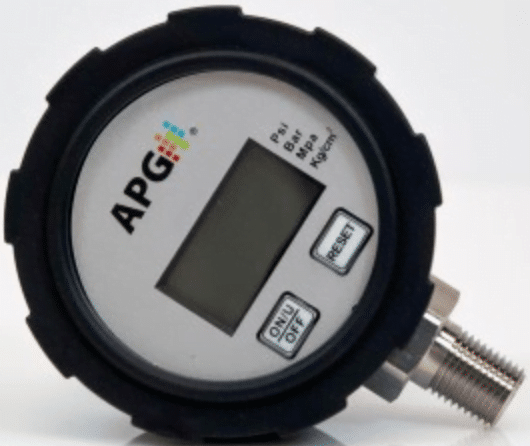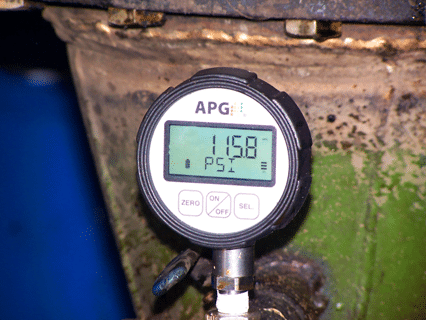When you need to measure a vacuum, you may instantly think of a compound pressure gauge instead of absolute pressure gauges. After all, that’s how they’re used. However, you might want to take a look at absolute pressure gauges. The differences between the two are relatively subtle but essential. So let’s take a look.
Reference Points
The significant difference between compound and absolute pressure gauges is the reference point – what the gauge uses as zero. An absolute pressure gauge uses a full vacuum as zero. When the unit is sealed, it’s done under a complete vacuum. Therefore, all of its measurements are positive.
With compound pressure, the zero reference point is atmospheric pressure, which is ~15 psi at sea level. The reference chamber is never sealed but vents out to the atmosphere. The diaphragm on a compound unit will measure vacuum pressure, which will read as a negative psi on a digital gauge, or often in inches of mercury (inHg) on an analog gauge.
So 7.5 psi on an absolute pressure gauge would read -7.5 psi on a compound gauge at sea level. This is the most significant difference between the two types of pressure measurements.
It’s merely a different way of accomplishing the same task.
Vacuum Sealed vs Vented
There are consequences for sealing at a vacuum or leaving a gauge vented. Namely, sealing at vacuum means that your measurement will include atmospheric pressure affected by the weather. A vented instrument automatically cancels out pressure changes due to weather. Both have their pros and cons.
In a closed system, there is real merit to using absolute pressure gauges and transmitters. Most pressurized systems have pumps, and pump calculations based on absolute measurements, which is a smart reason to standardize on absolute pressure across the board.
Another benefit of absolute pressure gauges is that they are sealed. Thus, there is no vent to act as a penetration point for dust and moisture.

Compound pressure automatically compensates for changes in atmospheric pressure because it uses the current atmospheric pressure as its zero point. Unfortunately, this means the zero point will change slightly as weather patterns affect the atmospheric pressure, which does not bother most people, but it’s worth understanding.
The biggest problem with compound pressure gauges is that you must convert a negative pressure to a positive absolute value for head and flow calculations in processes that use pumps. If you’re not monitoring your pumps, filters, and valves, that’s a separate issue altogether, and you should give us a call to talk about it.
When To Use
It’s difficult to recommend one type over the other as they both accomplish the same task – a way to measure both positive and vacuum pressure. However, as most people are more familiar with compound pressure gauges, you will likely want to keep to a standard.
But, if you’re in a closed system with pumps, using absolute pressure gauges is a good idea – at least on the suction and discharge of the pumps. It’s also a good idea to use absolute pressure gauges when you’re in particularly wet or dirty environments because the sensing elements and electronics are fully sealed.
So think about it! Next time you purchase pressure gauges or transmitters for vacuum measurements, reconsider your assumptions and ask if absolute pressure is a better choice for you.
Let us know if you have any questions about pressure gauges, transmitters, or the various reference points. Our Measurement Experts are happy to help!
WRITTEN BY

Sami T.
Sami Thompson is APG’s Marketing Technical Writer and has been with the company since 2022. With a master’s degree in English from Utah State University and a 40-page thesis publication under her belt, Sami has a demonstrated strong writing background. In her free time, Sami enjoys reading and birdwatching.


